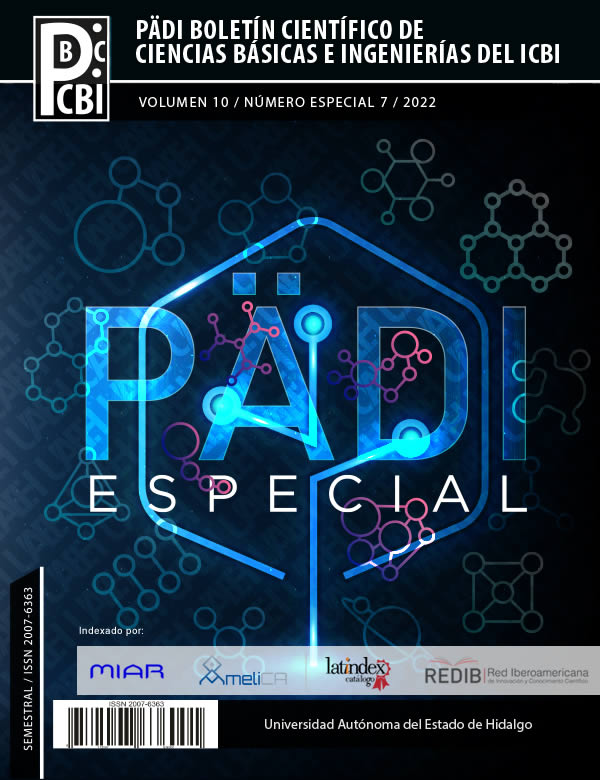Cytotoxicity evaluation of calcium phosphates synthesized at different molar ratios of ca/p by the hydrothermal route
Abstract
In the present study, calcium phosphate powders were synthesized hydrothermally with Ca/P molar ratios of 1.4, 1.67, and 2.0. The crystallinity and phase were determined by X-ray diffraction analysis, and the formation of calcium phosphates was evidenced by infrared spectrophotometry. Thermal stability measured by thermogravimetric analysis showed that the sample with Ca/P molar ratio: 1.67 (Hydroxyapatite) is more stable. The morphology of the powders was observed by scanning electron microscopy. Cytotoxicity studies with the NIH-3T3 cell line of mouse fibroblasts at concentrations of 10 mg/ml indicated that the powders obtained with different Ca/P ratios are cytocompatible.
Downloads
References
Auclair‐Daigle, C., Bureau, M. N., Legoux, J. G., & Yahia, L. H. (2005). Bioactive hydroxyapatite coatings on polymer composites for orthopedic implants. Journal of Biomedical Materials Research Part A: An Official Journal of The Society for Biomaterials, The Japanese Society for Biomaterials, and The Australian Society for Biomaterials and the Korean Society for Biomaterials, 73(4), 398-408.
Boanini, E., Fini, M., Gazzano, M., & Bigi, A. (2006). Hydroxyapatite nanocrystals modified with acidic amino acids.
Habibovic, P., Barrere, F., Van Blitterswijk, C. A., de Groot, K., & Layrolle, P. (2002). Biomimetic hydroxyapatite coating on metal implants. Journal of the American Ceramic Society, 85(3), 517-522.
Kundu, B., Lemos, A., Soundrapandian, C., Sen, P. S., Datta, S., Ferreira, J. M. F., & Basu, D. (2010). Development of porous HAp and β-TCP scaffolds by starch consolidation with foaming method and drug-chitosan bilayered scaffold based drug delivery system. Journal of Materials Science: Materials in Medicine, 21(11), 2955-2969.
Lahiri, D., Benaduce, A. P., Rouzaud, F., Solomon, J., Keshri, A. K., Kos, L., & Agarwal, A. (2011). Wear behavior and in vitro cytotoxicity of wear debris generated from hydroxyapatite–carbon nanotube composite coating. Journal of Biomedical Materials Research Part A, 96(1), 1-12.
Liu, H., Yazici, H., Ergun, C., Webster, T. J., & Bermek, H. (2008). An in vitro evaluation of the Ca/P ratio for the cytocompatibility of nano-to-micron particulate calcium phosphates for bone regeneration. Acta biomaterialia, 4(5), 1472-1479.
Ozawa, M., & Suzuki, S. (2002). Microstructural development of natural hydroxyapatite originated from fish‐bone waste through heat treatment. Journal of the American Ceramic Society, 85(5), 1315-1317.
Malhotra, A., & Habibovic, P. (2016). Calcium phosphates and angiogenesis: implications and advances for bone regeneration. Trends in biotechnology, 34(12), 983-992.
Mobasherpour, I., Heshajin, M. S., Kazemzadeh, A., & Zakeri, M. (2007). Synthesis of nanocrystalline hydroxyapatite by using precipitation method. Journal of Alloys and Compounds, 430(1-2), 330-333.
Mondal, S., Bardhan, R., Mondal, B., Dey, A., Mukhopadhyay, S. S., Roy, S. & Roy, K. (2012). Synthesis, characterization and in vitro cytotoxicity assessment of hydroxyapatite from different bioresources for tissue engineering application. Bulletin of materials science, 35(4), 683-691.
Motskin, M., Wright, D. M., Muller, K., Kyle, N., Gard, T. G., Porter, A. E., & Skepper, J. N. (2009). Hydroxyapatite nano and microparticles: correlation of particle properties with cytotoxicity and biostability. Biomaterials, 30(19), 3307-3317.
Ozawa, M., & Suzuki, S. (2002). Microstructural development of natural hydroxyapatite originated from fish‐bone waste through heat treatment. Journal of the American Ceramic Society, 85(5), 1315-1317.
Prakash Parthiban, S., Elayaraja, K., Girija, E. K., Yokogawa, Y., Kesavamoorthy, R., Palanichamy, M. & Narayana Kalkura, S. (2009). Preparation of thermally stable nanocrystalline hydroxyapatite by hydrothermal method. Journal of Materials Science: Materials in Medicine, 20(1), 77-83.
Prakasam, M., Locs, J., Salma-Ancane, K., Loca, D., Largeteau, A., & Berzina-Cimdina, L. (2017). Biodegradable materials and metallic implants—a review. Journal of functional biomaterials, 8(4), 44.
Predoi, D., Iconaru, S. L., Predoi, M. V., Motelica-Heino, M., Guegan, R., & Buton, N. (2019). Evaluation of antibacterial activity of zinc-doped hydroxyapatite colloids and dispersion stability using ultrasounds. Nanomaterials, 9(4), 515.
Rocha, J. H. G., Lemos, A. F., Kannan, S., Agathopoulos, S., & Ferreira, J. M. F. (2005). Hydroxyapatite scaffolds hydrothermally grown from aragonitic cuttlefish bones. Journal of Materials Chemistry, 15(47), 5007-5011.
Roy, M., Fielding, G. A., Beyenal, H., Bandyopadhyay, A., & Bose, S. (2012). Mechanical, in vitro antimicrobial, and biological properties of plasma-sprayed silver-doped hydroxyapatite coating. ACS applied materials & interfaces, 4(3), 1341-1349.
Sariibrahimoglu, K., Wolke, J. G., Leeuwenburgh, S. C., Yubao, L., & Jansen, J. A. (2014). Injectable biphasic calcium phosphate cements as a potential bone substitute. Journal of Biomedical Materials Research Part B: Applied Biomaterials, 102(3), 415-422.
Wei, Y., Chang, Y. H., Liu, C. J., & Chung, R. J. (2018). Integrated oxidized-hyaluronic acid/collagen hydrogel with β-TCP using proanthocyanidins as a crosslinker for drug delivery. Pharmaceutics, 10(2), 37.













